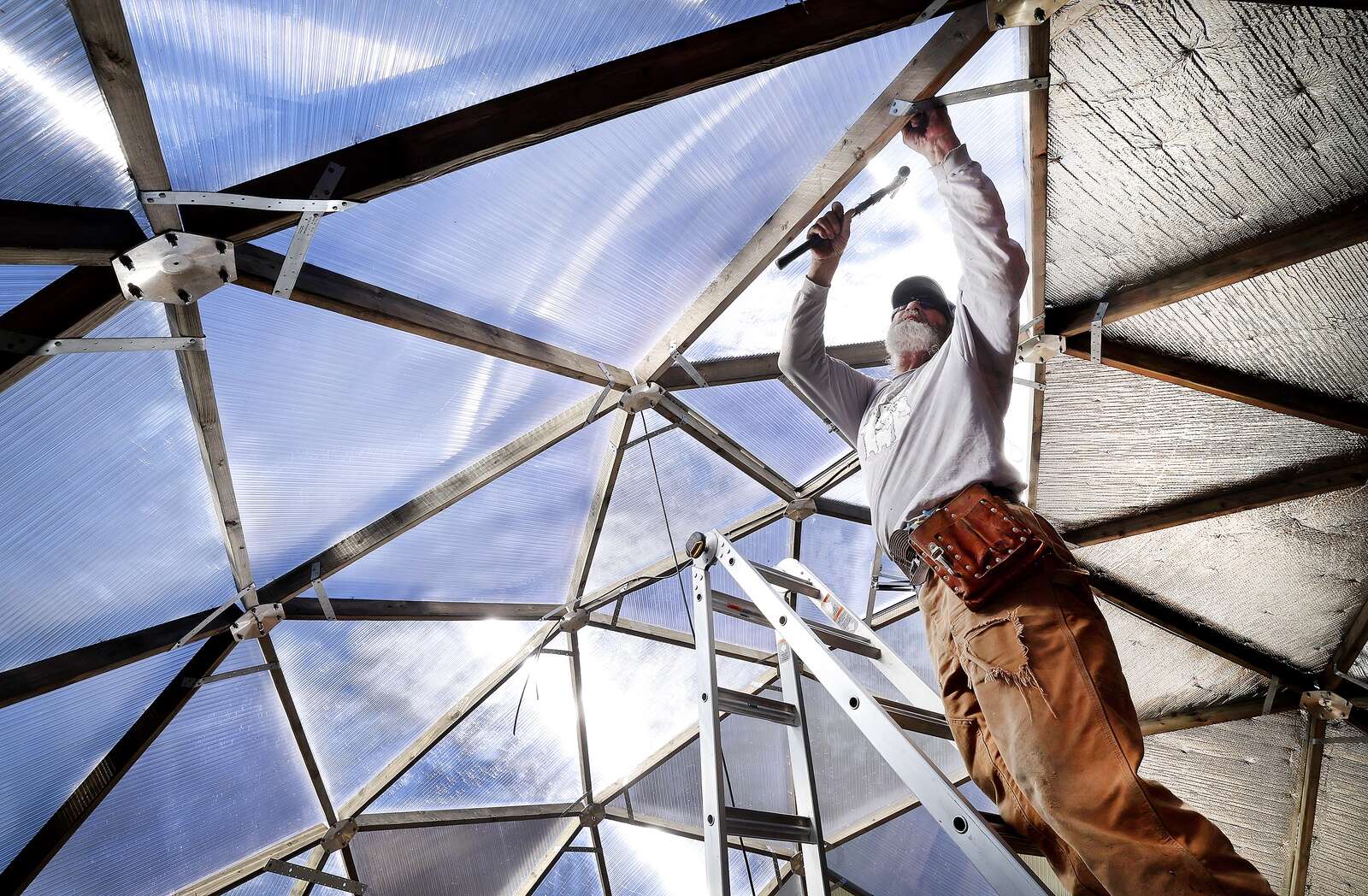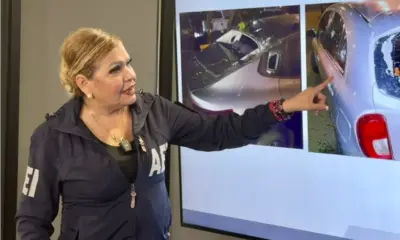Business
Geodesic Greenhouse Unveiled to Combat Food Insecurity in Vallecito

VALLECITO – A new 26-foot-tall geodesic dome greenhouse has taken shape in Vallecito as part of a community initiative aimed at tackling food insecurity in the Pine River Valley. The project, driven by the nonprofit organization Pine River Shares, seeks to provide year-round access to fresh produce for local residents. Volunteers will maintain the greenhouse, and all harvested food will be distributed free of charge to those in need.
Chuck Freeman, a project volunteer, expressed optimism about the greenhouse’s potential impact, stating, “It’s going to help a lot of people up here.” The structure, which was erected in less than three days, reportedly sustained no damage during recent flooding that affected the area and led to the evacuation of approximately 390 homes.
Community Effort and Support
The atmosphere at the construction site was lively, with contractors and local volunteers working together in a coordinated effort. Freeman noted that the project has been over two years in the making, and he estimates that once operational, the greenhouse could support 20 to 30 people. “I’m imagining all these neighbors – and everybody that has helped – being able to eat and get fresh vegetables out of this instead of traveling 30 minutes, 40 minutes to the store,” he remarked.
Food insecurity is a significant challenge in La Plata County, where about 20% of residents manage with only two meals a day. Many of those affected reside in the Pine River Valley, where income levels are lower, and rising grocery prices have made locally produced food less accessible. Freeman highlighted that some of the food produced in the area is often exported to wealthier regions, underscoring the necessity of local solutions.
The greenhouse initiative is one of several efforts undertaken by Pine River Shares, which received $390,000 in funding from the American Rescue Plan Act through La Plata County three years ago. This funding has been pivotal in the development of the Field-to-Fork program. Andrew Trujillo, a veteran and Bayfield-based farmer involved in the project, explained, “That’s kind of when this all started. We started visiting the communities and seeing what they wanted.”
Building a Sustainable Future
The geodesic dome is situated on land generously donated by Terry Shear, a local resident who expressed his eagerness to contribute: “I like people. I like teaching folks, and I had the space – so why not?” The completion of the greenhouse required extensive community engagement and collaboration, with Pine River Shares operating on a collective basis without a designated project leader. This approach resulted in numerous discussions among volunteers, some of which were contentious.
Shear noted the challenges faced during meetings, stating, “I’ll tell you, some of our meetings people were disagreeing, butting heads. Once everybody got out here, though, it was different. There’s so much ownership.”
The construction process exemplified the spirit of community involvement. Typically, contractor Austin Willis estimates that building a geodesic dome takes around 32 hours with a small team. However, with the help of ten volunteers from Pine River Shares, the project was completed in just 19 hours. “We’ve had a really amazing team of volunteers,” Willis stated. “They just flew right through it.”
As Pine River Shares looks ahead, the organization envisions creating a sustainable food shed in the Pine River Valley, ensuring that healthy food remains accessible to local communities. With the greenhouse now completed, the focus shifts to determining the crops to be grown. Tomatoes and cucumbers are likely candidates for the year-round garden, and discussions are also underway regarding raised planter beds to accommodate the needs of older volunteers.
Freeman acknowledged the uncertainty surrounding the project’s next steps, saying, “We never thought that we were going to get this thing done. Now that we’re here, we can start sitting down and deciding, ‘OK, what exactly do we want to do?’”
The greenhouse represents a critical step toward addressing food insecurity in the region, fostering hope among residents as the community regroups after recent challenges.
-

 Business6 days ago
Business6 days agoUK to Finalize Stablecoin Regulations by 2026, Boosting Crypto Sector
-

 Business7 days ago
Business7 days agoU.S. and U.K. Target Cybercriminal Networks, Seize $15 Billion
-

 Lifestyle6 days ago
Lifestyle6 days agoKISS OF LIFE’s Natty Dazzles in Micro-Shorts at Seoul Event
-

 World6 days ago
World6 days agoMilitary Artillery Plan Sparks Safety Concerns Along California Highway
-

 Sports6 days ago
Sports6 days agoDomenico Doran’s Stellar Performance Leads Bishop Amat to Victory
-

 World7 days ago
World7 days agoTrump Signals Reluctance to Sell Tomahawk Missiles to Ukraine
-

 Business7 days ago
Business7 days agoCalifornia to Eliminate All Plastic Bags from Stores by 2026
-

 Entertainment6 days ago
Entertainment6 days agoLouisiana Senate Raises Concerns Over Medicaid Cuts Amid New Bill
-

 Entertainment7 days ago
Entertainment7 days agoUtah Communities Rally as Government Shutdown Strains Resources
-

 Sports7 days ago
Sports7 days agoTrade Low, Trade High: Key NHL Players to Consider Now
-

 Science4 days ago
Science4 days agoAncient Dinosaur Discovery in Argentina Reveals Evolutionary Insights
-

 Health4 days ago
Health4 days agoUncovering the Hidden Link Between Knee Pain and Hip Issues









